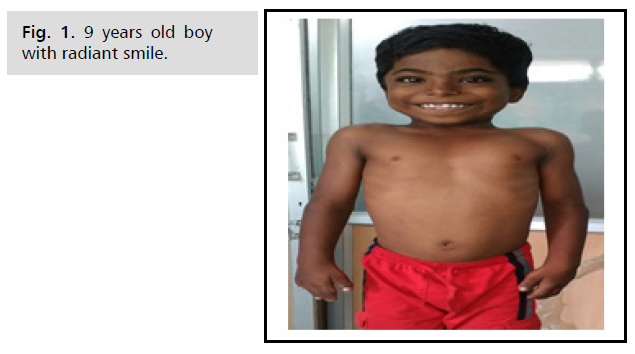Image Article - (2022) Volume 13, Issue 11
Psychomotor dysfunction in rasopathies
Ramachandran Muthiah*
Department of Cardiology, Pondicherry University, Puducherry, India
*Correspondence:
Dr.
Ramachandran Muthiah, Department of Cardiology,
Pondicherry University, Puducherry,
India,
Tel: 7598755201,
Email:
Received: 04-May-2022, Manuscript No. IPJNN-22-12770;
Editor assigned: 06-May-2022, Pre QC No. P-12770;
Reviewed: 01-Nov-2022, QC No. Q-12770;
Revised: 07-Nov-2022, Manuscript No. R-12770;
Published:
15-Nov-2022
About the Study
Rasopathies are developmental disorders characterized
by postnatal growth retardation with delayed skeletal
maturation, psychomotor dysfunction, cutis laxa, and
acanthosis Nigerians and resulting from germ line mutations
of the proto-oncogene HRAS. Many of these mutations affect
SHP2, SOS1, RAS, RAF and MEK proteins. Dr. White
says a group of related disorders including Costello syndrome,
Noonan Syndrome (NS), Cardiofaciocutaneous (CFC)
syndrome, and Neurofibromatosis 1 (NF1), caused by abnormal
functioning of Ras‐mitogen‐activated protein kinase (RAS/
MapK) signalling pathway that controls cell proliferation,
differentiation and survival. In this pathway, Ras, a GTPase,
transmits extracellular signaling from receptor tyrosine kinases
to two serine/threonine kinases (Raf and MEK) and to the
activation of MAPKs. Psychosomatic dysfunction is a
common feature of rasopathies. Isoprenylation involves the
enzyme Farnesyl Transferase (FTase) transferring a farnesyl
group from Farnesyl Pyrophosphate (FPP) to the pre-Ras
protein. Pathway modulators or small molecule inhibitors
such as statins causes significant improvement in verbal
and nonverbal memory, visual attention and efficacy by
inhibiting the posttranscriptional lipid modification of RAS.
RAF-1 inhibition by C-type Natriuretic Peptide (CNP)
improved bone growth in preclinical animal models and it is a
potential targeted therapeutic drug to improve the stature of
patients. Gene correction of the germ line mutations to restore
normal protein functions is anticipated as a new therapeutic
option. Oxidative stress and free radicals determine non-
neoplastic clinical features such as elastin anomalies, alteration
of skin and appendages, developmental retardation and
cardiac defects. PAR therapy (potassium ascorbate with ribose).
Causes a reduction in oxidative stress biomarkers in parallel with
improvement of clinical features [1-5]. It combines the
antioxidant action of vitamin C with stabilizing intracellular
effects of potassium and causes improvement of skin
and appendage lesions, better evolution of psychomotor
development, no Progression of heart hypertrophy, nor tumor
development. It is low cost, no side effects, orally administered
and useful for all genetic syndromes (Fig. 1).

Fig. 1. 9 years old boy with radiant smile.
References
- Muthiah R. Isolated acute rheumatic pancreatitis—A case report. Clin Med Case Rep. 2021 Feb 20;10(2):52-77.
Google Scholar, Crossref, Indexed at
- Muthiah R. infective endocarditis in tetralogy of fallot complicating brain abscess—A case report. Clin Med Case Rep. 2019 May 13;8(5):105-26.
Google Scholar, Crossref, Indexed at
- Muthiah R. Native aortic valve endocarditis—A case report. Clin Med Case Rep. 2018 Sep 13;7(09):483.
Google Scholar, Crossref, Indexed at
- Muthiah R. tropical coronary artery disease and arrhythmogenic potentials—The changing pattern towards endomyocardial fibrosis—An analysis. Clin Med Case Rep. 2018 Jun 14;7(6):397-429.
Google Scholar, Crossref, Indexed at
- Muthiah R. Isolated patent ductus arteriosus in an elderly female, Aged 65 Years—A Case report. Clin Med Case Rep. 2018 May 28;7(05):352.
Google Scholar, Crossref, Indexed at






